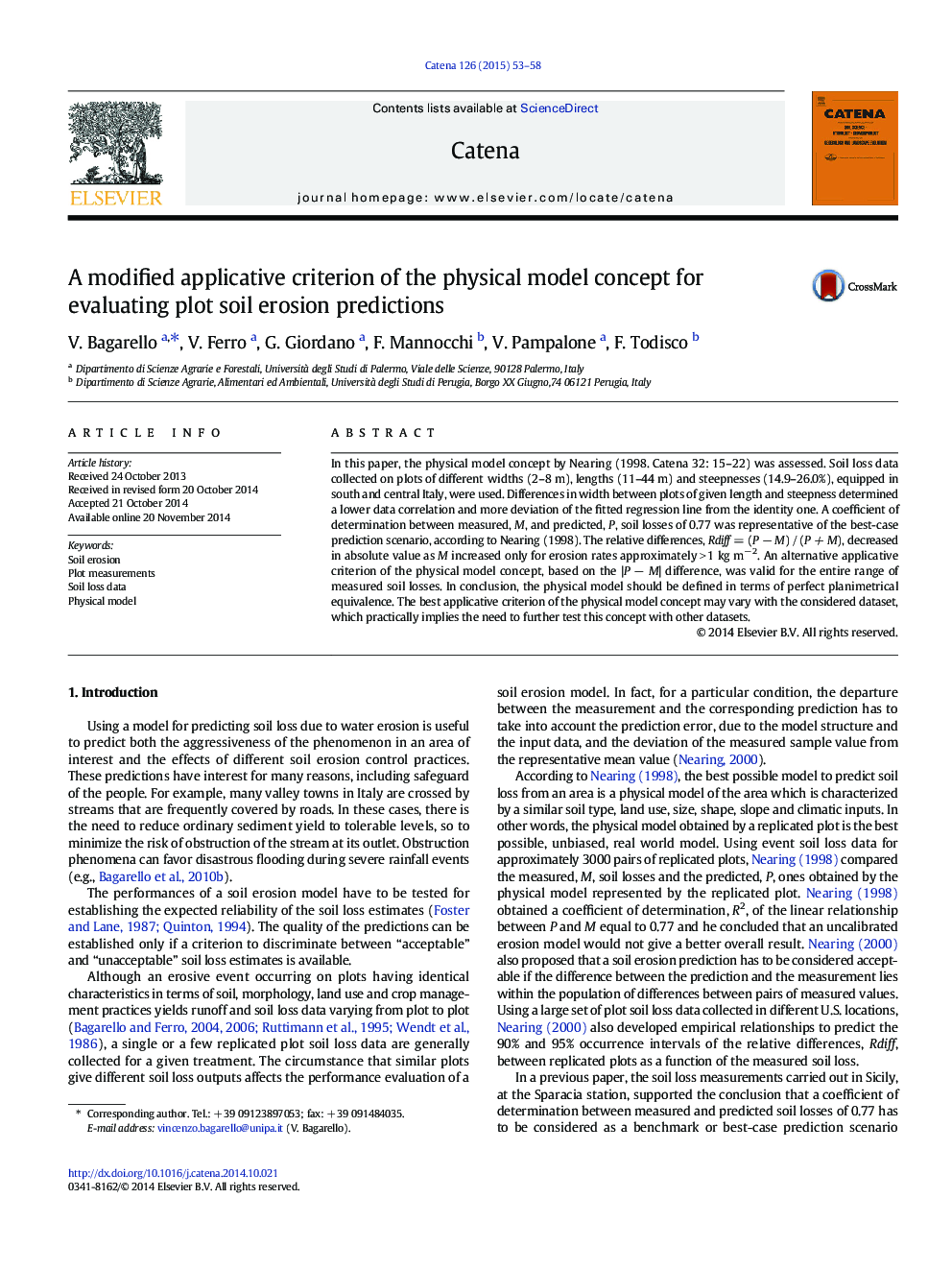| Article ID | Journal | Published Year | Pages | File Type |
|---|---|---|---|---|
| 4571374 | CATENA | 2015 | 6 Pages |
•The physical model concept allows to test reliability of soil loss predictions.•This concept was positively tested in southern and central Italy.•The coefficient of determination of measured vs. predicted soil losses was 0.76.•A modified criterion to establish the reliability of the predictions was proposed.•A world data set should be developed to further test the physical model concept.
In this paper, the physical model concept by Nearing (1998. Catena 32: 15–22) was assessed. Soil loss data collected on plots of different widths (2–8 m), lengths (11–44 m) and steepnesses (14.9–26.0%), equipped in south and central Italy, were used. Differences in width between plots of given length and steepness determined a lower data correlation and more deviation of the fitted regression line from the identity one. A coefficient of determination between measured, M, and predicted, P, soil losses of 0.77 was representative of the best-case prediction scenario, according to Nearing (1998). The relative differences, Rdiff = (P − M) / (P + M), decreased in absolute value as M increased only for erosion rates approximately > 1 kg m− 2. An alternative applicative criterion of the physical model concept, based on the |P − M| difference, was valid for the entire range of measured soil losses. In conclusion, the physical model should be defined in terms of perfect planimetrical equivalence. The best applicative criterion of the physical model concept may vary with the considered dataset, which practically implies the need to further test this concept with other datasets.
